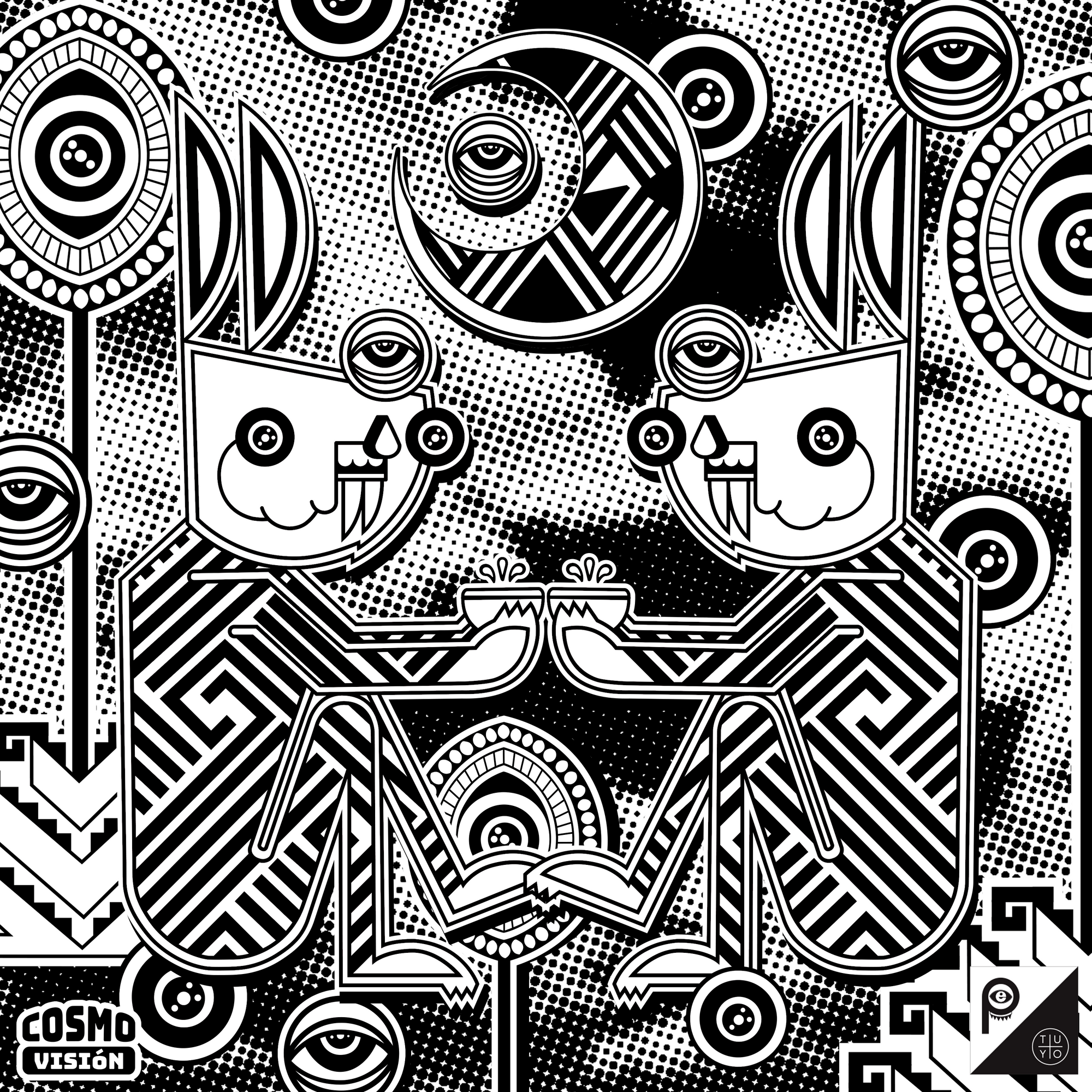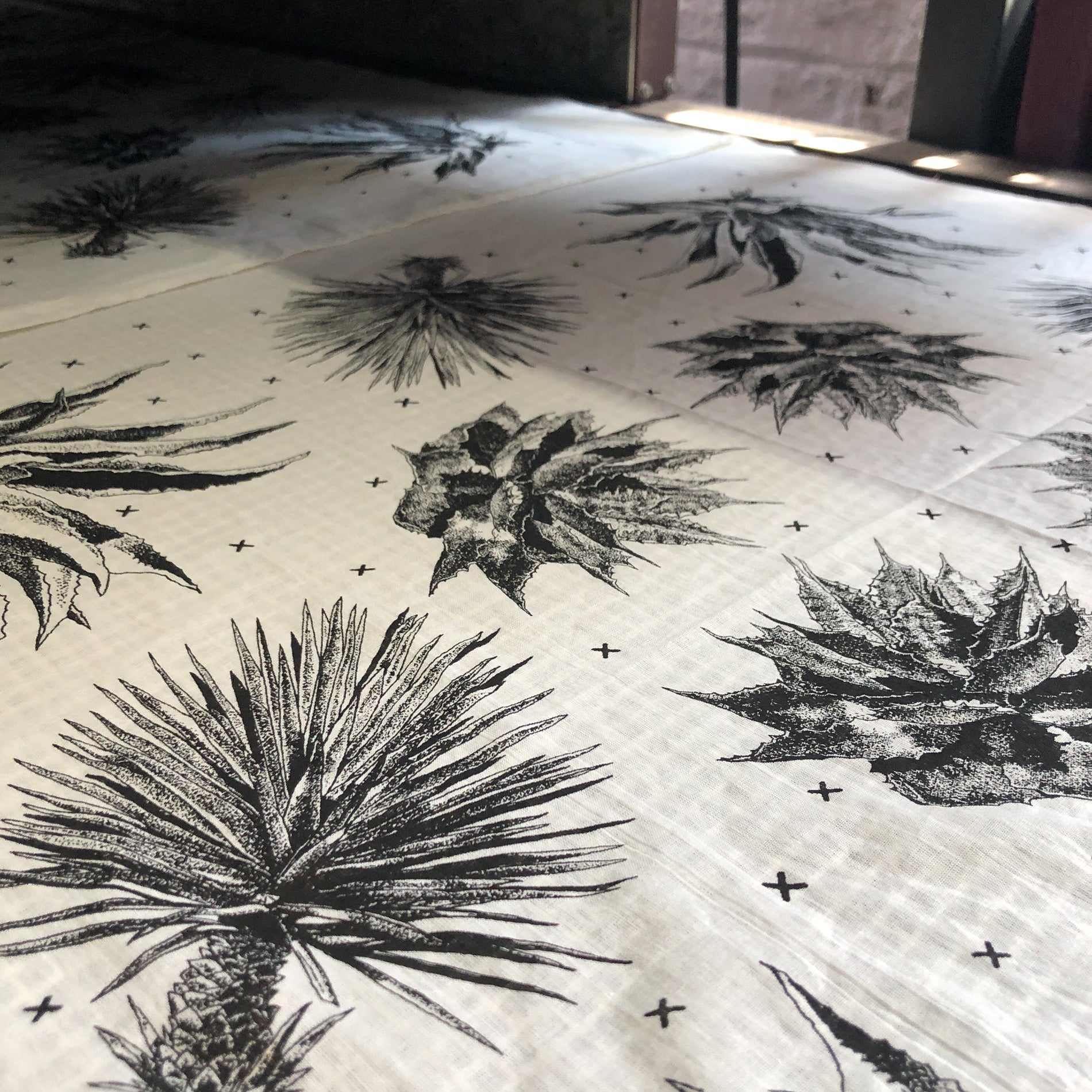Your Cart is Empty
free shipping $300+


This collection was inspired by the rich symbolism and mythology of the maguey plant and alcoholic beverages derived from them. We began by collecting images and reading about the historical context of these symbols. Three visual elements kept repeating themselves throughout our research: The Maguey, The Moon and The Rabbit.
As part of our research we revisited a book by Ulises Torrentera titled: “Miscella mezcalacea”. In a series of essays Torrentera gives historical context to the importance of the agave in pre-hispanic indigenous Mexico and how certain traditions extended to post conquest Mexico.

Metl is a Nahuatl word that means maguey or agave plant. The maguey is closely entwined with pre-hispanic indigenous culture and communities in Mexico. Used for food, shelter, weapons, clothing, in spiritual rituals, medicinally and of course to make pulque and mezcal, these plants are the essence of the land and the people who live on it. “¡Sin maguey no hay mezcal!” (without maguey there is no mezcal!).
 image 1 / image 2
image 1 / image 2
Metztli is a Nahuatl word that means moon; crescent; a month. Throughout history, it has been believed that plants can be “divinized” or spiritually charged by the energy of the moon. Palenqueros have long believed that ripe agave plants should be harvested in the light of a full moon. In the Aztec calendar the moon was used to record time in lunar months as in a period from “new moon to new moon”. Within the indigenous (first nation) cultures of Mexico there are many origin stories about how the moon was created and why the rabbit can be seen in it - read the Aztec story here.

Tochtli is a Nahuatl word that means rabbit. These creatures appear in several worldview and origin stories of indigenous communities within Mexico. According to the Aztecs, the rabbit was a creator god of the 5th sun. The symbol of a rabbit was used in the Aztec calendar to denote the day associated with Mayahuel the goddess of fertility, the maguey plant and pulque. Mayahuel typically is depicted with several breasts that are used to feed the centzon totochtin or 400 rabbits. Divine deities, these “400” rabbits are thought to represent the many types of inebriation.

The geometric stone work found in the pyramids and structures of Mitla was also a major visual inspiration. These pieces of stone were hand-carved and set in place one by one. To stand inside these ancient structures you can’t help but feel the energy that exists within it.

This collection features three original artworks by the visual artist POE. We first met POE about three years ago at a now shuttered bar in Brooklyn. POE’s art spoke to us from the moment we saw it, and we dreamed of one day being able to collaborate on a project together. With a rough concept in mind we contacted POE in early February to start a conversation.
Our creative journey together was truly a wonderful experience. It consisted of long meaningful conversations that helped form the final illustrations that comprise this collection. POE created these images using a visual language he has been developing over the years. The result is his artistic interpretation of the themes and concepts we discussed.
What we love about POE’s style is his use of graphic space in his compositions, creating a boldness that holds the viewer’s gaze. In these illustrations there are overlapping themes of mysticism and heightened consciousness. It’s as if, with every new artwork he creates, he is building his own visual cosmogony.

Poe is a fine artist and muralist from El Paso, Texas. His hand drawn, ominous yet playful characters are shaped by religious iconography, pop culture, and Southwest patterns. It was at New Mexico State University when Poe began to explore his surrounding influence, while continuing to celebrate the human figure. Poe received a BFA from NMSU in 2009. His work has shown in exhibitions, traveling print shows, on clothing and murals around Texas, New Mexico and New York.
After receiving the original artwork, Gabriel and I set out to adjust and optimize it for production. Each illustration is meticulously hand traced in illustrator, line density is corrected for uniformity and readability allowing for minor aesthetic changes. The objective is to retain the hand of the artist while also preparing it for the silkscreening process. In the case of the Tochtli hoodie it meant creating two tochtli's "cheersing" their copitas, a visual depiction of the essence of mezcal. "¡Para todo mal mezcal, para todo bien tambien" (For everything bad mezcal for everything good as well!)
As keeping with our mission of creating products that are environmentally friendly, locally sourced and ethically made we source our 100% heavy weight crew neck sweatshirts from Los Angeles Apparel. The soft ring-spun organic cotton T-shirts are from Royal Apparel. The crop-top is also from Royal Apparel. We encourage you to hand wash and air dry your garments to give them the longest life possible. Our prints are silk-screened in Ridgewood at Classy Screens.

Like all meaningful projects tend to do, this one has led us down many paths, and will continue to do so for the foreseeable future. Earlier this year I read the book Fifth Sun by Camilla Townsend. It’s a retelling of the history of the Aztecs through the use of Nahuatl-language texts known as the annals, written right after the conquest, by, as Townsend calls them, “indigenous intellectuals” eager to preserve their collective history. It provides the most important perspective missing from our western “new world” revisionist history; a documented re-telling from the original, first nation inhabitants of the land. After also listening to it on audible, I became really interested in the Nahuatl language and went down a rabbit hole of researching indigenous language in Mexico.
Mexico is one of the world’s most linguistically diverse nations. Within Mexico there are 364 indigenous language subsets belonging to 68 distinct languages, which branch off from 11 language families! Nahuatl is one of the most widely-spoken indigenous languages of the Americas with approximately 1.5 million speakers in central Mexico.
In New York it is estimated that more than 250,000 of the city’s 320,000 Mexican-born population are of indigenous origin (Nevaer 2012) and thatone out of three speak an indigenous language.

Gabriel and I decided that this project was meant to go a step further than any of our past collections. We were reminded of an animation project a colleague of G’s had worked on called 68 voices 68 hearts.
In 2013 Gabriela Badillo created Sesenta y Ocho Voces Sesenta y Ocho Corazones, an animated series of Mexican indigenous stories told in their native language. These animated shorts are based on the philosophy that "No one can love what they don't know."
Please note: you can change the language captions to English using the CC button on the lower right hand side of each video.
68 Voces: Náhuatl. Cuando muere una lengua from Hola Combo on Vimeo.
We fell in love with the project and want to do whatever we can to help bring awareness and funding to this cultural and artistic treasure. We recently recorded a podcast with Gaby where she describes her experiences as the project has evolved and grown over the years. She explains the creative process and logistical obstacles they face in producing each one minute short. IT’S AMAZING WORK!
We will be donating a portion of the proceeds from this collection to 68. However, because we are a teeny tiny company and our sales are modest we encourage you to donate directly if you can. Some of these languages are in danger of going extinct before they finish the project, and they need all the help they can get!
